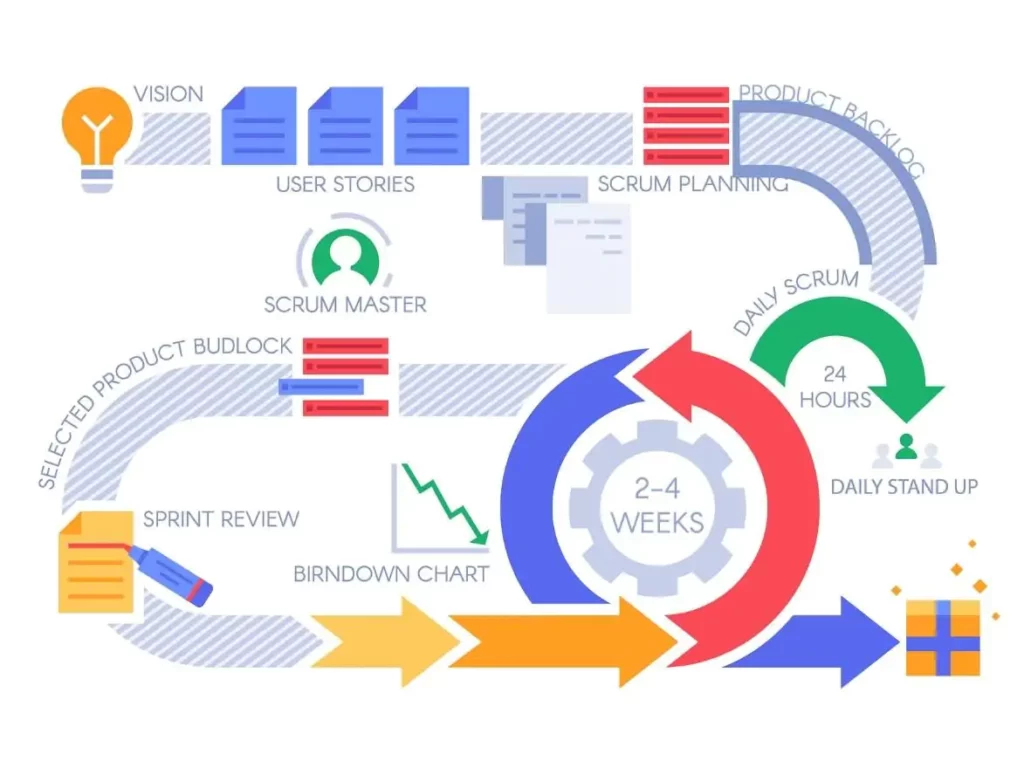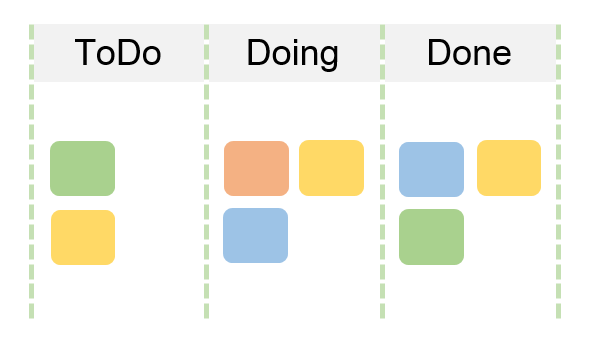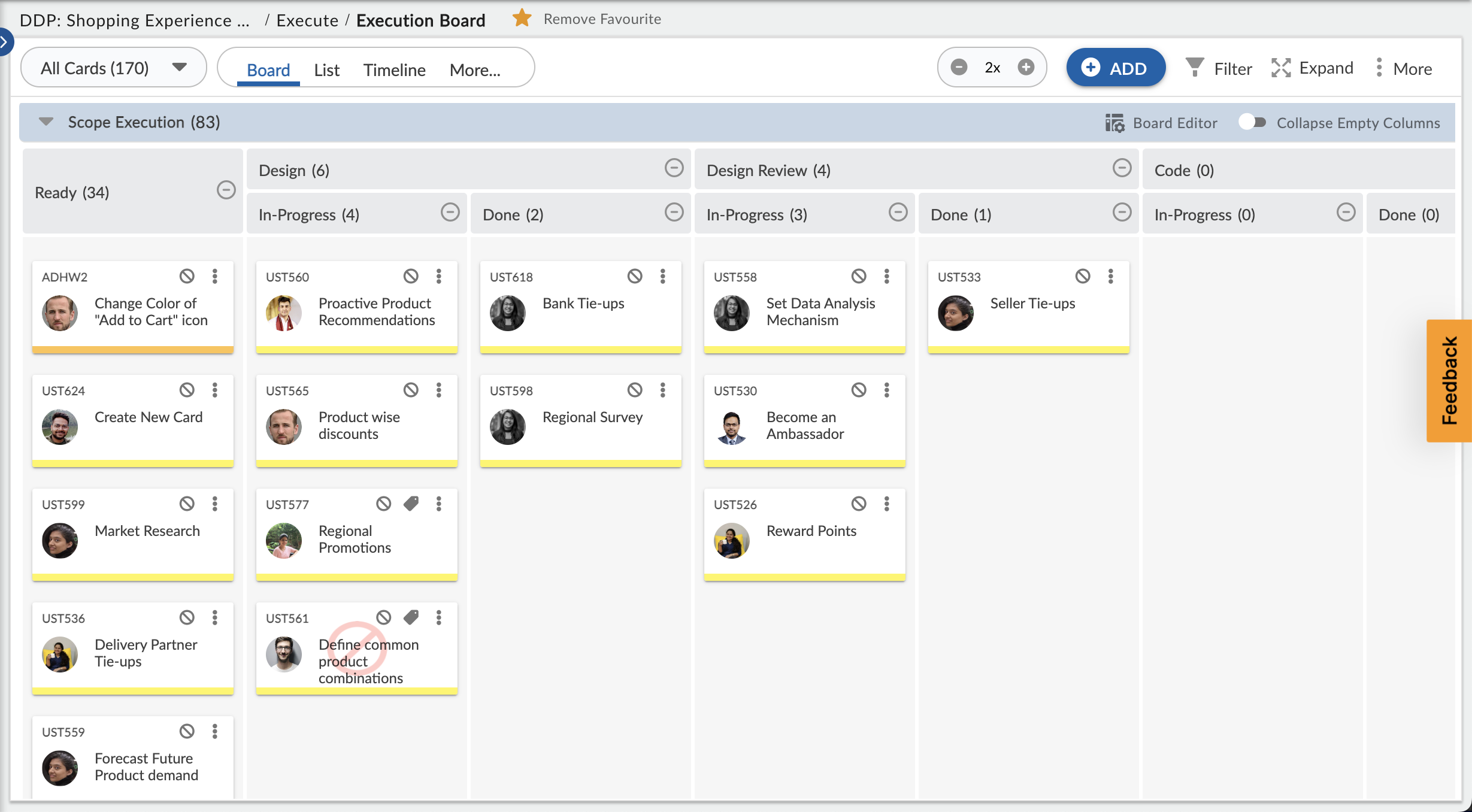Selecting the right project management methodology is critical in steering a product development project toward success. Each methodology—Scrum, Kanban, and Waterfall—offers a unique approach to organizing, managing, and executing tasks. This article explores each method in detail and provides guidance on when to use them to maximize benefits for project managers and their teams.

1. Understanding the Basics: Scrum, Kanban, and Waterfall
Scrum
Scrum is a structured Agile framework focused on delivering projects incrementally through short, time-bound sprints. During each sprint, cross-functional teams work on high-priority tasks that culminate in a potentially shippable product increment. Scrum is ideal for projects that benefit from constant feedback and iteration, especially those in complex and dynamic environments.
☑ Daily Stand-Ups and Sprint Planning: Regular stand-up meetings and sprint planning sessions are core to Scrum, promoting communication and ensuring alignment.
☑ Role of the Scrum Master and Product Owner: The Scrum Master guides the team by removing obstacles, while the Product Owner prioritizes the backlog based on business goals.
Kanban
Kanban is a visual approach to project management emphasizing continuous flow and adaptability. Teams use Kanban boards to visualize tasks across stages (e.g., “To Do,” “In Progress,” “Done”) and limit the number of tasks in progress, ensuring efficient task handling and preventing bottlenecks.
☑ Continuous Workflow: Unlike Scrum, Kanban doesn’t use time-boxed sprints, making it more suitable for projects with ongoing work where tasks flow at different paces.
☑ Flexible Planning: Teams can add tasks to the board as needed, allowing for a more responsive approach that adapts easily to changes.
Waterfall
The Waterfall methodology follows a linear, sequential approach where each project phase (requirements, design, implementation, testing, and deployment) is completed before moving to the next. It’s best for projects with clearly defined requirements that are unlikely to change over time, such as regulatory compliance projects.
☑ Stage-Gate Process: Waterfall’s structured stages help track progress, offering a clear path and timeline from project start to finish.
☑ Extensive Documentation: Each stage involves detailed documentation, which can be useful for projects with fixed requirements or where formal records are required.
2. When to Use Scrum for Product Development Projects
For Complex, Evolving Requirements: Scrum is highly adaptable and suited to projects where requirements might change frequently. It embraces flexibility through short sprints, allowing teams to make adjustments based on feedback and new insights. This adaptability makes it an excellent choice for innovative or experimental projects where end goals may shift.
For Collaborative Team Environments: Scrum’s collaborative structure encourages frequent interaction and teamwork, with daily stand-ups, sprint reviews, and retrospectives. This method is highly effective for teams that benefit from regular communication and collective problem-solving, making it ideal for close-knit and co-located teams.
Benefits for Project Managers: Project managers using Scrum gain visibility into team progress through sprint reviews, which allows for iterative adjustments. Additionally, Scrum’s regular cycles help managers track productivity, anticipate obstacles, and adjust schedules based on real-time data, keeping the project aligned with evolving objectives.
3. When to Use Kanban for Product Development Projects
For Continuous Workflows: Kanban is particularly suited for projects with ongoing, repeatable tasks that don’t require time-boxed deadlines. It’s commonly used in industries like customer support, maintenance, or manufacturing, where teams handle continuous tasks rather than discrete project phases.
For Flexibility and Speed: Kanban’s visual nature and work-in-progress limits enable teams to quickly adjust priorities as new tasks or changes arise. This adaptability makes Kanban well-suited for teams that operate in unpredictable environments, as they can reprioritize tasks in real time without disrupting workflows.
Benefits for Project Managers: Kanban boards give project managers a clear view of task status, which helps optimize resource allocation and productivity. By visualizing work in progress and identifying bottlenecks, managers can address inefficiencies, ensuring tasks flow smoothly and deadlines are met.
4. When to Use Waterfall for Product Development Projects
For Projects with Clear, Fixed Requirements: Waterfall is best for projects where requirements are clearly defined at the outset and unlikely to change, such as construction or regulatory compliance projects. With its sequential structure, Waterfall enables teams to progress through each phase systematically, making it ideal for projects with rigid requirements.
For Sequential Task Completion: Since Waterfall’s approach is linear, it’s well-suited for projects requiring specific tasks to be completed before others can begin. Industries like manufacturing, construction, and infrastructure often use Waterfall to maintain order, ensuring that each stage is completed in the correct sequence.
Benefits for Project Managers: The structure of Waterfall offers clear milestones and checkpoints, making it easier for project managers to track progress and ensure accountability. The methodology’s documentation-heavy approach is particularly useful for stakeholders who require formal reports, providing detailed insights at each project phase.
5. Comparing Scrum, Kanban, and Waterfall: Key Considerations for Project Managers
Flexibility vs. Structure: Scrum and Kanban offer flexibility, allowing teams to adapt as projects evolve, while Waterfall’s structured nature is best suited to projects with stable requirements. When choosing a methodology, project managers should assess the likelihood of changes in requirements and the team’s need for flexibility versus predictability.
Team Autonomy and Collaboration Needs: Scrum promotes regular interaction and autonomy within sprints, fostering a strong team culture ideal for collaborative environments. Kanban also supports team autonomy, albeit with less structure than Scrum. In contrast, Waterfall provides a more traditional approach, better suited for projects where roles are predefined, and team collaboration is minimal.
Project Visibility and Control: Scrum’s sprint cycles and Kanban’s continuous board provide high visibility over progress, which helps managers monitor productivity and address issues promptly. Waterfall, with its distinct stages, offers visibility mainly at each checkpoint, making it more challenging to adapt between phases if changes occur.
Resource Management: Resource allocation varies significantly across these methodologies. Scrum’s sprint-based structure enables project managers to allocate resources based on planned increments. Kanban, with its continuous flow, allows for real-time resource adjustments. Waterfall’s phase-driven approach, however, requires resource commitments at each stage, making it better suited for projects with stable resource requirements.
Budget and Timeline Predictability: Scrum and Kanban are inherently flexible, which can make budgeting and timelines more challenging to estimate projects accurately. Waterfall, with its structured planning and documentation requirements, offers a clearer view of costs and timelines, making it a preferable choice for budget-conscious projects or projects with rigid deadlines.
6. Conclusion: Choosing the Right Methodology for Better Project Outcomes
Choosing a project management methodology should be based on project requirements, team preferences, and overall goals. Scrum, with its flexibility and iterative approach, is best for projects needing continuous feedback. Kanban suits teams that require workflow visualization and real-time flexibility, while Waterfall’s structured approach is ideal for projects with fixed requirements and clear deadlines.
For project managers, understanding these methodologies allows for better alignment with team dynamics, client expectations, and organizational needs. By thoughtfully selecting a methodology that best fits the project context, managers can improve team productivity, streamline workflows, and ultimately enhance the likelihood of project success.
Looking for a versatile tool to implement these methodologies seamlessly? Nimble’s project management solutions empower you to adapt Scrum, Kanban, or Waterfall to your team’s needs with ease. From planning to execution, Nimble ensures your projects stay on track and deliver outstanding results. Explore Nimble today!










